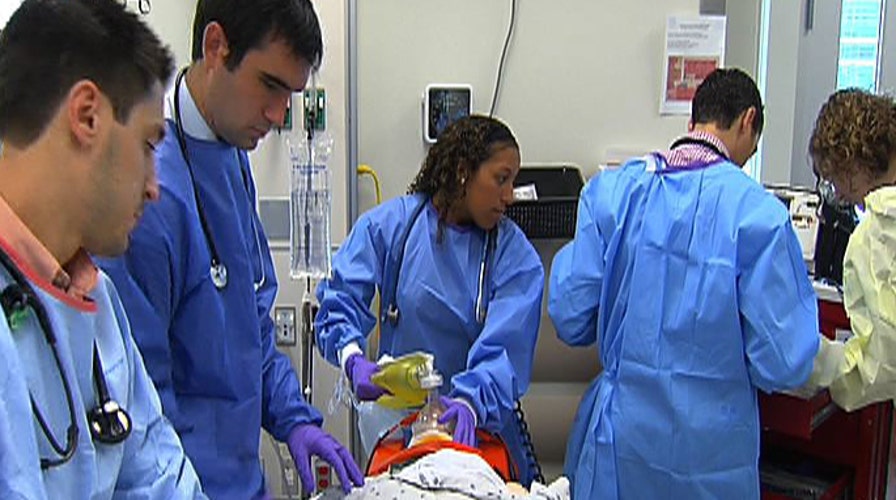Training the doctors of tomorrow
Ever wonder what it's like to go to medical school? Check out how one of the nation's top programs is teaching the doctors of the future
Health care in America has changed drastically over the last decade – but the way doctors are trained has been the same for over 100 years. Now, some of the nation’s top medical schools are revamping their programs.
“Probably the single biggest reason was trying to prepare students for what health care was going to be like in a decade,” Dr. Charles Lockwood, dean of The Ohio State University (OSU) College of Medicine told FoxNews.com. “Because if you think the last 10 years have been quite a change, really when we begin to be able to sequence people’s entire DNA, and identify every conceivable illness that they're going to have, and begin to design prevention along those lines ― it's going to require a very different mindset for docs.”
Typically, medical students spend their first two years of medical school hitting the books, but at OSU’s College of Medicine, they’re trained as medical assistants in the first six weeks, and within eight weeks, they are seeing patients as health coaches.
“Working with patients in a service-type fashion early on in the curriculum is extremely valuable to the students ― it keeps them grounded in why they came to medical school,” Dr. Daniel Clinchot, vice dean for education at OSU’s College of Medicine said of the school’s new Lead. Serve. Inspire program. “Having your patient population that you work with over the course of 18 months is very unique, and I think really is inspiring for many of our students.”
Historically, American medicine has always centered around doctors, but a growing shift in health care delivery has put more emphasis on ensuring quality outcomes for patients.
“You have to do a lot more teaching of patients, you have to explain their illness, you have to explain all the options available for their therapy, you have to spend a lot of time talking about prevention,” said Lockwood. “Communication skills are something that are going to be critically important for the future doc, and that's not something we've emphasized before in medical education.”
Advances in technology and a focus on prevention are just two of the health care changes that helped shape the new Lead. Serve. Inspire curriculum. All incoming medical students are given iPads and classes are available as traditional lectures, podcasts and e-learning modules.
In a state-of-the-art clinical skills center on campus, students can practice virtual laparoscopy and robotic procedures. And there are four critical care simulation bays with life-like mannequins that can mimic human illnesses and medical emergencies. From a control room outside the simulation area, instructors create scenarios that test the students’ ability to treat patients under pressure in the emergency room, operating room, trauma center and labor and delivery wing.
“I think the best thing about the simulations is that it helps you practice in a lower-stress environments than when you're actually working with patients,” Shannon Emerick, a medical student at OSU’s College of Medicine, said. “You can kind of get the jitters out, and by pretending these are real patients, you can make sure you have everything straight by the time you're working with actual people.”
Learning the business of health care is also at the core of the Lead. Serve. Inspire program. Health care economics classes are built into the curriculum, and students also have the option to minor in business or take time off to get their MBA to help them prepare to run a successful practice in the future.
“It's crucial that they understand the cost of health care,” said Lockwood. “Every test that they order, they need to understand exactly what that costs, every imaging procedure, every test that they do has a cost, and they need to understand what it is, and is it absolutely necessary or is there another way to get that information?”
For more on The Ohio State University College of Medicine’s Lead. Serve. Inspire program visit medicine.osu.edu.

